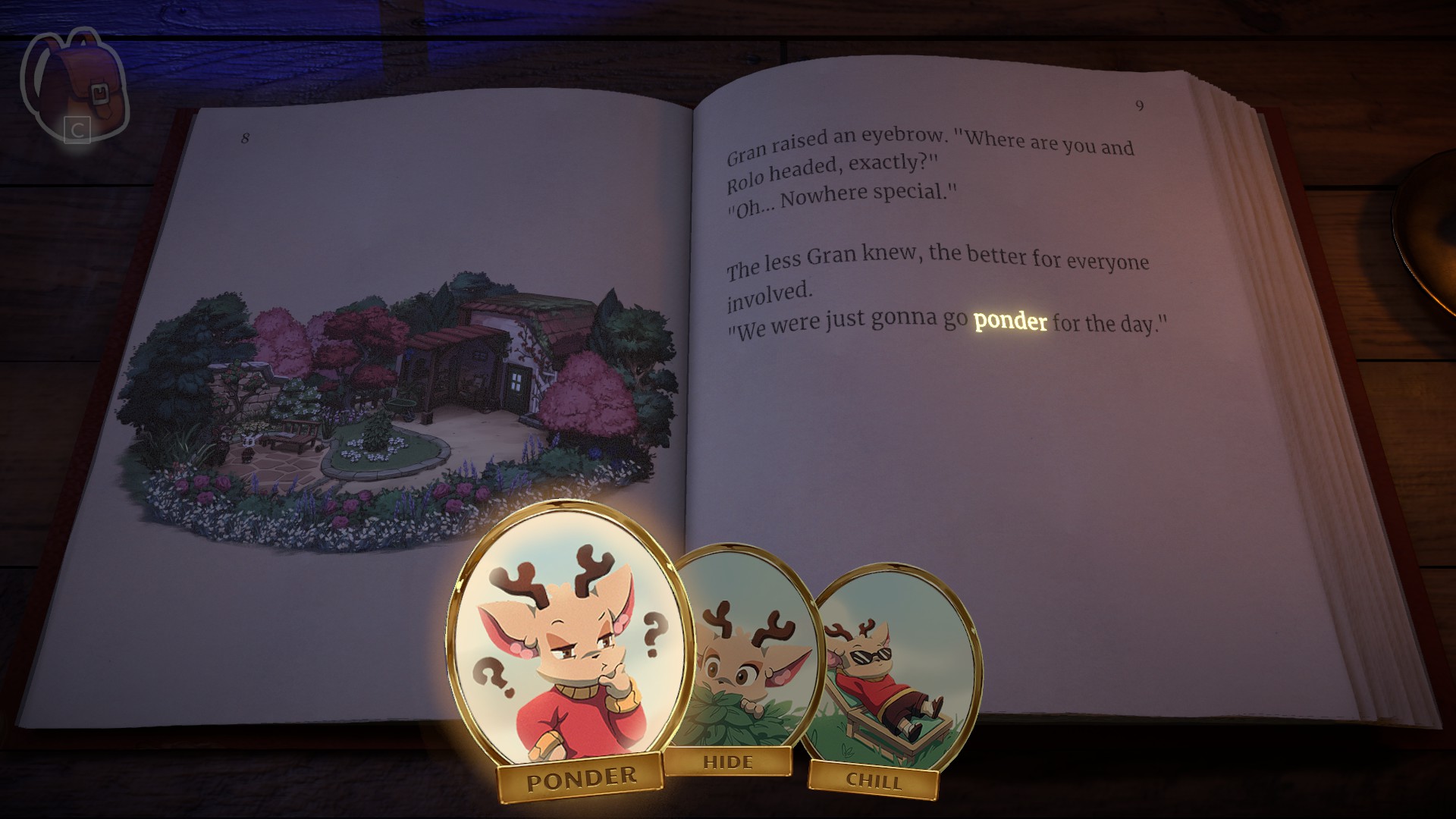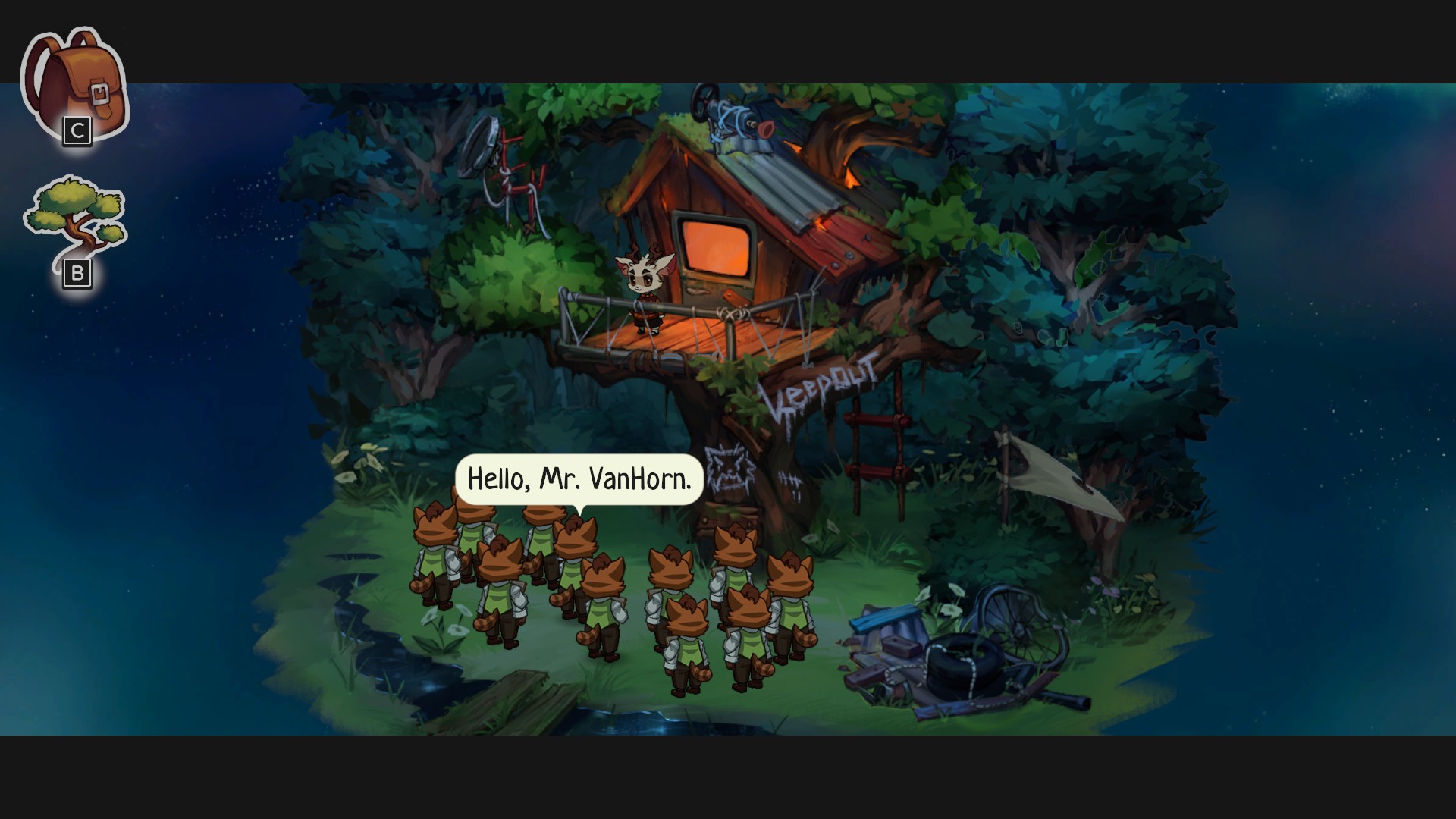Beacon Pines is the most charming game I’ve played this year so far, but it hides dark undertones that fans of Gravity Falls and Eerie Indiana might just adore.
Narrative-centric games aren’t exactly uncommon these days, so any game that puts itself in this potentially wide-ranging genre really needs to do something a little different to stand out. The likes of The Stanley Parable having a non-linear approach to its story, or Virginia telling its tale with no words are examples of games taking an unusual approach to storytelling. Beacon Pines enters the fray with what seems like a fairly ordinary choice-driven story, but the way it approaches your access to choices is quite unique and provides a branching narrative that reminds me of 9 Hours, 9 Persons, 9 Doors in some ways.
Beacon Pines is a small town in the middle of nowhere, previously having a thriving farming economy thanks to a local family’s seemingly super-effective fertiliser. Several years before our story takes place though, a mysterious event referred to as the Foul Harvest left the town struggling until a mysterious corporation arrived with plans to turn everyone’s fortunes around. Who they are, what the Foul Harvest was, and why people keep mentioning something called The Source are all mysteries you’ll have solved by the time you’re through.
The game is framed in an interesting way, as the narrator of a storybook speaks directly to you about a town filled with anthropomorphic animals. Whilst you are in control of Luka, you often interact directly with the book being read. When controlling Luka, you explore the titular town of Beacon Pines, getting into trouble with your friends, and potentially uncovering that mystery about the town. You’ll be talking to townsfolk, investigating points of interest, and engaging in some light puzzle solving. Occasionally though, you’ll need to interact with the book itself, changing the story for better or worse.

At certain stages, the narrator takes over from the action. Everything freezes, the book appears, and text scrolls across the page as the storyteller goes into greater detail, leaving a blank in the final sentence on the page. “The decided to play the classic good cop… cop interrogation” you may be prompted, being given some options to fill in the gap to progress the story down different routes. This on its own isn’t all that interesting, but Beacon Pines plays with this concept a little.
Throughout your adventure, Luka will come across Charms which contain the words you’ll be allowed to use at these key turning points. At first you’ll only have a few, meaning your options for those branching paths are very limited, but as you progress and frequently fail, you’ll pick up more and more, allowing you to go back and take a new path.
Those failures really are inevitable, too. Initially it’s impossible to reach the final conclusion of the tale, as the options open to you will lead to the often unpleasant demise of Luka, his friends, and occasionally the whole town. But those failures grant you new options that you’ll have discovered, and the story can easily be flipped back to a previous turning point without you having to sit through the same scenes over and over. Your new knowledge of previous paths gives you greater insight into the overarching conspiracy, and the narrator reminds you of this regularly, giving me that vibe of 9 Hours, 9 Persons, 9 Doors I mentioned previously.

Unfortunately, this does lead to the fact that the choices you make are really an illusion. There is only one correct path through the game, and the only way to travel that path is to reach all the dead ends — with the emphasis on dead in most cases. I actually didn’t mind this, as the story itself was really quite charming, with enough intrigue to keep me invested throughout. If you’re hoping for a true choose your own adventure experience though, this isn’t it.
That charm isn’t limited to the story. The world and characters are wonderfully brought to life. I sympathised with the losses Luka had suffered as a child, and grew to love the relationship he has with best friend Rolo. The treehouse they spent time in together is exactly the sort you’d expect to see in a story like this too, with all sorts of crude contraptions only children could throw together. New girl Beck and strangely smiley Mr. Kerr all have back stories that you’ll gradually dig into over the five-ish hours of story available, and you’ll quickly find favourites as you spend time with them.
This is all certainly helped by a gorgeous art style, with almost watercolour styled backdrops behind the brightly coloured characters. Whilst some of the animation isn’t in the style I personally like, the bouncy way in which characters walk around matched the appealing aesthetic. Only the narrator is voiced, but it’s really well done, and I was always happy to hear her voice pipe up, regardless of how badly things had turned out. Occasionally she would reference endings that we had experienced but the other characters hadn’t, which was a neat touch. I’d have like the characters to be acted too, but instead we had Banjo-Kazooie inspired sound effects which got a little irritating for one or two characters, but for the most part this was fine. All of this is backed by a wonderful soundtrack as well. In terms of presentation, this is hard to fault.

Being hard to fault sums up Beacon Pines quite well in fact. I thoroughly enjoyed my time playing through the story. The core mystery kept me engaged, although from time to time I had to think back to which timeline I was in so I didn’t get mixed up. The art style is beautiful, and the way the story is told is certainly not one you see very often. It’s a game that I hope picks up some traction, as I’d love to see more from this world and from developer Hiding Spot. This is a world well worth exploring.
Beacon Pines is available now on PC, Xbox, and Nintendo Switch.
Comments are closed.